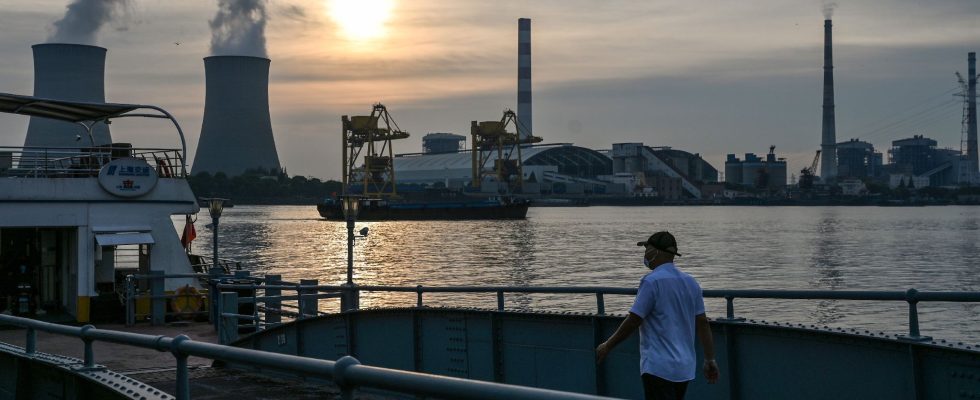A declarative trial phase without taxation, from October 1, before real entry into force in 2026. The Border Carbon Adjustment Mechanism (MACF), known as the border carbon tax, will enter its first phase on Sunday October 1 , as the French government indicated on Friday.
What does this device consist of?
This carbon border tax, which received the green light from the European Parliament on April 18, was introduced to protect efforts to green European economies. It is part of the European “Green Deal”, the plan to combat global warming. The European continent has set itself the goal of achieving carbon neutrality by 2050.
The MACF will require companies importing “carbon-intensive goods” from the iron and steel, aluminum, cement, fertilizer and electricity sectors into the European Union (EU) to pay a tax on the CO2 emitted during their manufacture abroad.
Concretely, the importer of Chinese steel or Turkish cement will have to declare the emissions linked to the production process and, if they exceed the European standard, acquire an emissions certificate at the price of CO2 in the EU. If a carbon market exists in the country of production, but with a lower carbon price than in Europe, as is currently the case in China and in certain American states, the importer will pay the difference.
What is its purpose ?
This mechanism was born in order to maintain fair conditions of competition between European manufacturers of these products – already subject to the European carbon market – and others, in the face of the planned disappearance of free quotas in Europe.
According to the government, this mechanism “puts on an equal footing the fact of producing steel within the European Union” or outside and then importing it. The executive welcomes its “contagious” effect, because it “will encourage our commercial partners” to strengthen their climate action.
This tax could bring the EU around “3 billion euros in 2030, and undoubtedly more after”, as it comes into force, the government indicated. Not to mention that it should eventually be extended to other products.
What’s the calendar ?
“On October 1, 2023, the MACF enters a first phase of implementation which we call ‘blank’ until the end of 2025, which will allow, without imposing a price at this stage, to collect a lot of data from the share of our industrialists” in order to “evaluate the fair price” of imported emissions, the government indicated.
“The mechanism will then gradually ramp up over a period of 9 years, from 2026 to 2034, in parallel with the reform of the carbon quota market,” the government said during a press briefing bringing together, among others, the ministries of Economy and Energy Transition.
Why do companies fear a distortion of competition?
This measure is criticized: European companies fear being penalized, particularly in industry, with a risk of imbalance between the prices of European and non-European products. External markets do not have a comparable mechanism and many countries apply little or no carbon tax on their soil.
This is particularly the case for processed products, not affected by the MACF. As recounted The echoesproducers outside Europe will be able to continue to export cars to Europe at competitive prices, while European companies will be forced to increase their prices to compensate for the adjustment mechanism.
A report submitted last May to Elisabeth Borne by the economist Jean Pisani-Ferry pointed out the risk of worsening problems of distortion of competition for exporters. “The MACF does not respond in any way to the problems of distortion of competition in export markets (it even aggravates them, since exporters previously benefited from free quotas)”, indicated this report.
“A car made in the EU with European steel will incur an additional cost due to its carbon content, this will not be the case for cars made in China,” noted the report. “With this new system, we will make users pay. It is not the Chinese or the Turks who will pay the border tax, that is what may be misunderstood by the general public or even by decision-makers” , deplored last June in an interview with AFP Raphaël Trotignon, co-author with Olivier Redoulès of a study published by the Rexecode institute entitled “The architecture of carbon border adjustment threatens the objective of reindustrialization”.
